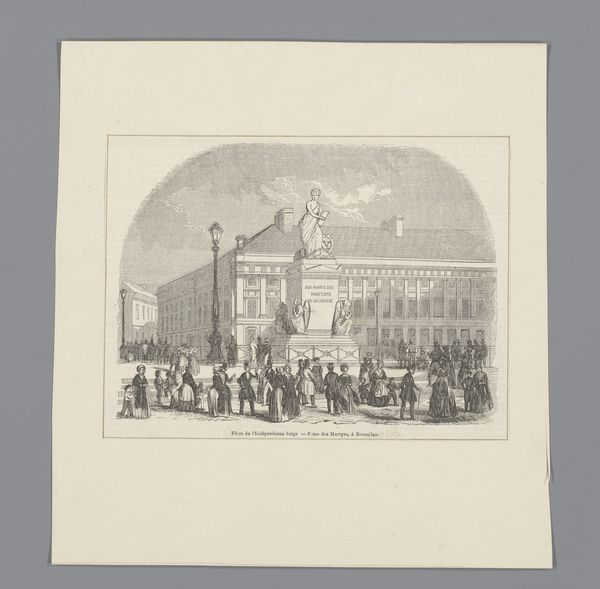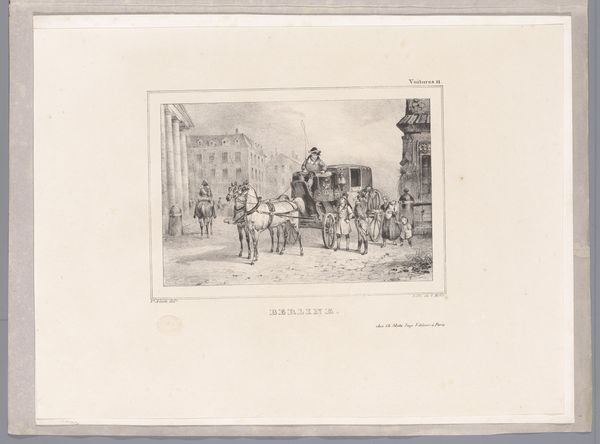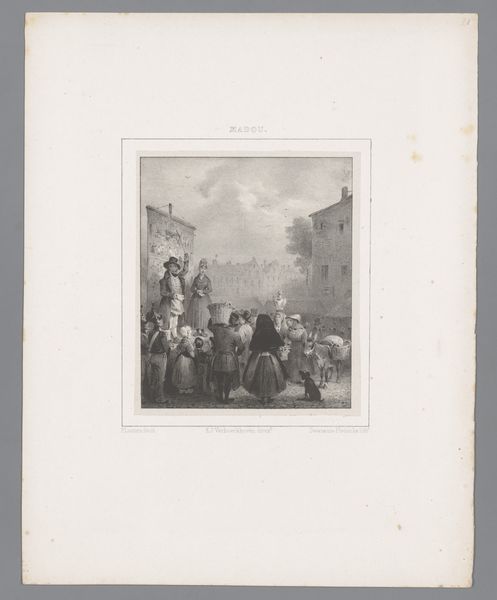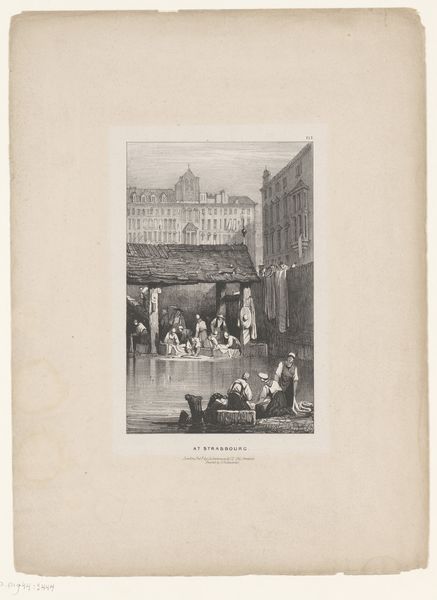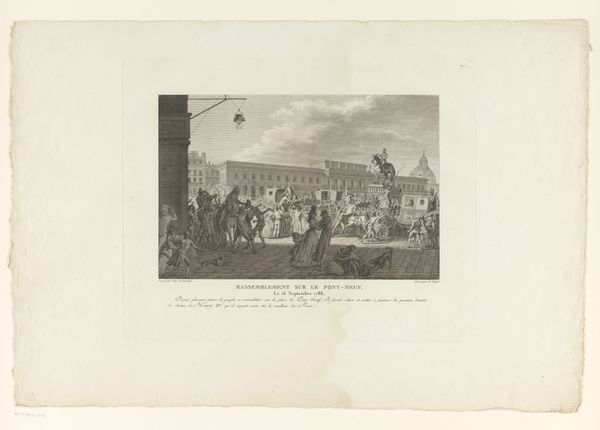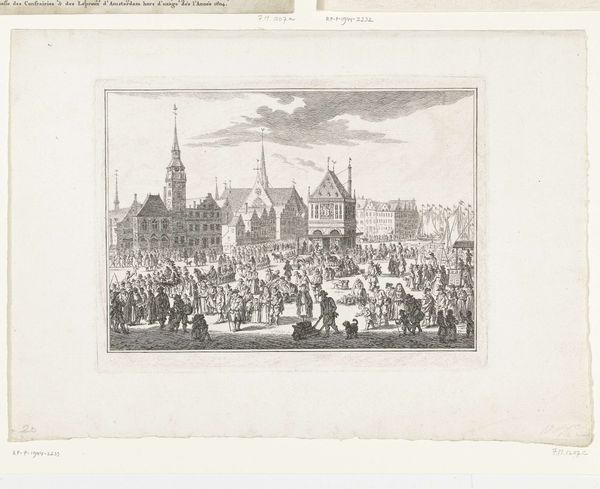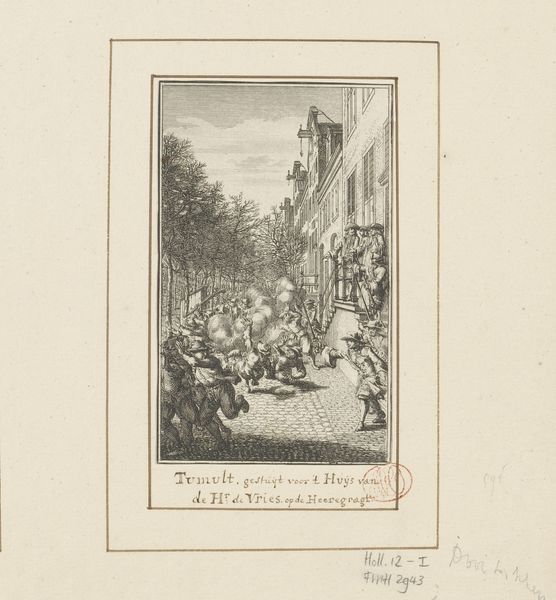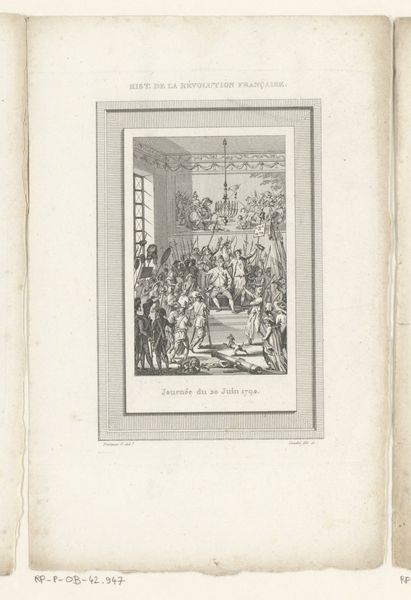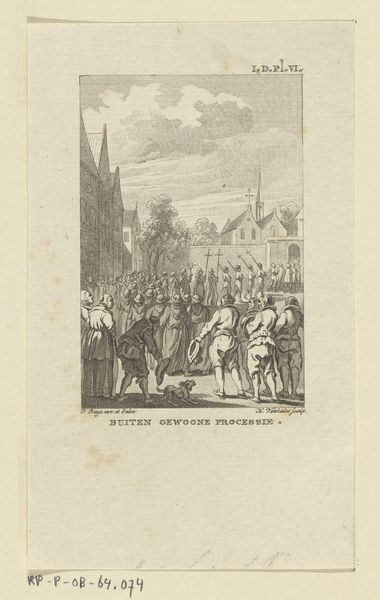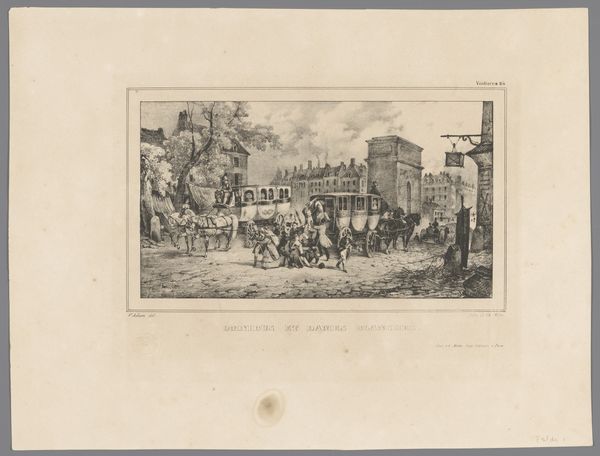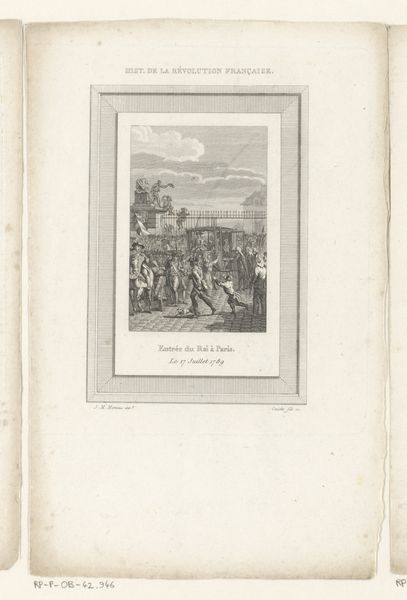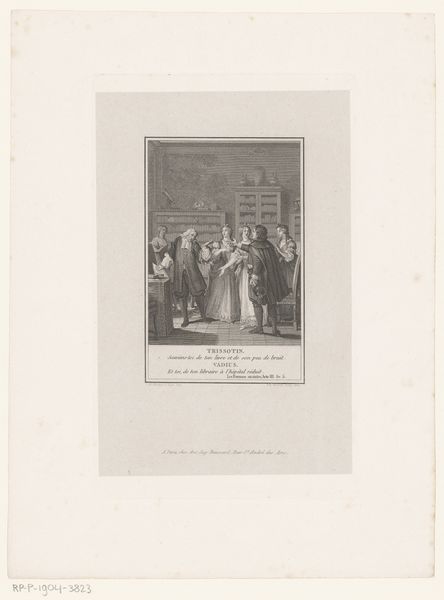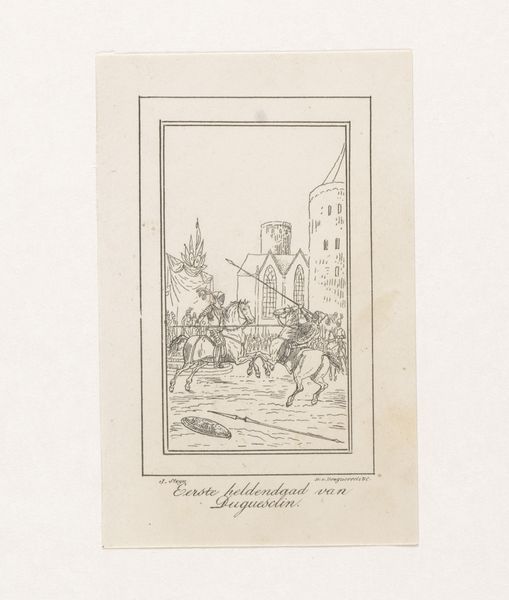
print, etching, engraving
#
dutch-golden-age
# print
#
etching
#
figuration
#
line
#
cityscape
#
history-painting
#
engraving
Dimensions: height 129 mm, width 79 mm, height 174 mm, width 112 mm
Copyright: Rijks Museum: Open Domain
Editor: This etching, titled "Oproer op de Dam tijdens het Aansprekersoproer, 1696," depicts a riot in Amsterdam and was created around 1702. It really captures a chaotic scene with a crowd of people facing the Royal Palace. What do you see in this piece that stands out, particularly concerning its historical implications? Curator: What jumps out is the relationship between the crowd and the architecture. Notice how the etching places the rioters directly confronting the symbolic heart of Dutch power. This wasn't just a random outburst. The Aansprekersoproer, or ‘Incitement Riot’, reflects deep social unrest tied to economic hardship and dissatisfaction with the ruling elite during the Dutch Golden Age. How does the artist portray the public role and politics embedded in the riots? Editor: The artist presents a distinct contrast in portraying the architecture against the riot scene. I wonder, considering that it's a later depiction made six years after the riot, what do you make of its potentially propagandistic message? Curator: That’s an important question. This print, created years after the actual event, becomes a constructed narrative. By showcasing this riot, it may have served several purposes. Perhaps a cautionary tale about the dangers of social disruption or maybe even a reminder of the government's capacity to maintain order. We must always consider whose story is being told, and for what end, when looking at historical images. Notice that the artist chose to portray only the riotous and to deliberately omit any figure of power. Editor: So, by focusing on the riot itself and omitting any figure of power, this piece subtly underscores a specific political commentary and potentially challenges the dominant historical narrative? Curator: Exactly! It prompts us to question how historical events are framed and the role art plays in shaping public perception. Considering that images of historical figures are far more appealing than those of 'nameless' rioters, its intended socio-political impact would definitely leave much room for speculation. Editor: I never would have thought of that on my own. Thank you for the clarification, this discussion really enhanced my understanding of the art's intended messaging and cultural context.
Comments
No comments
Be the first to comment and join the conversation on the ultimate creative platform.
